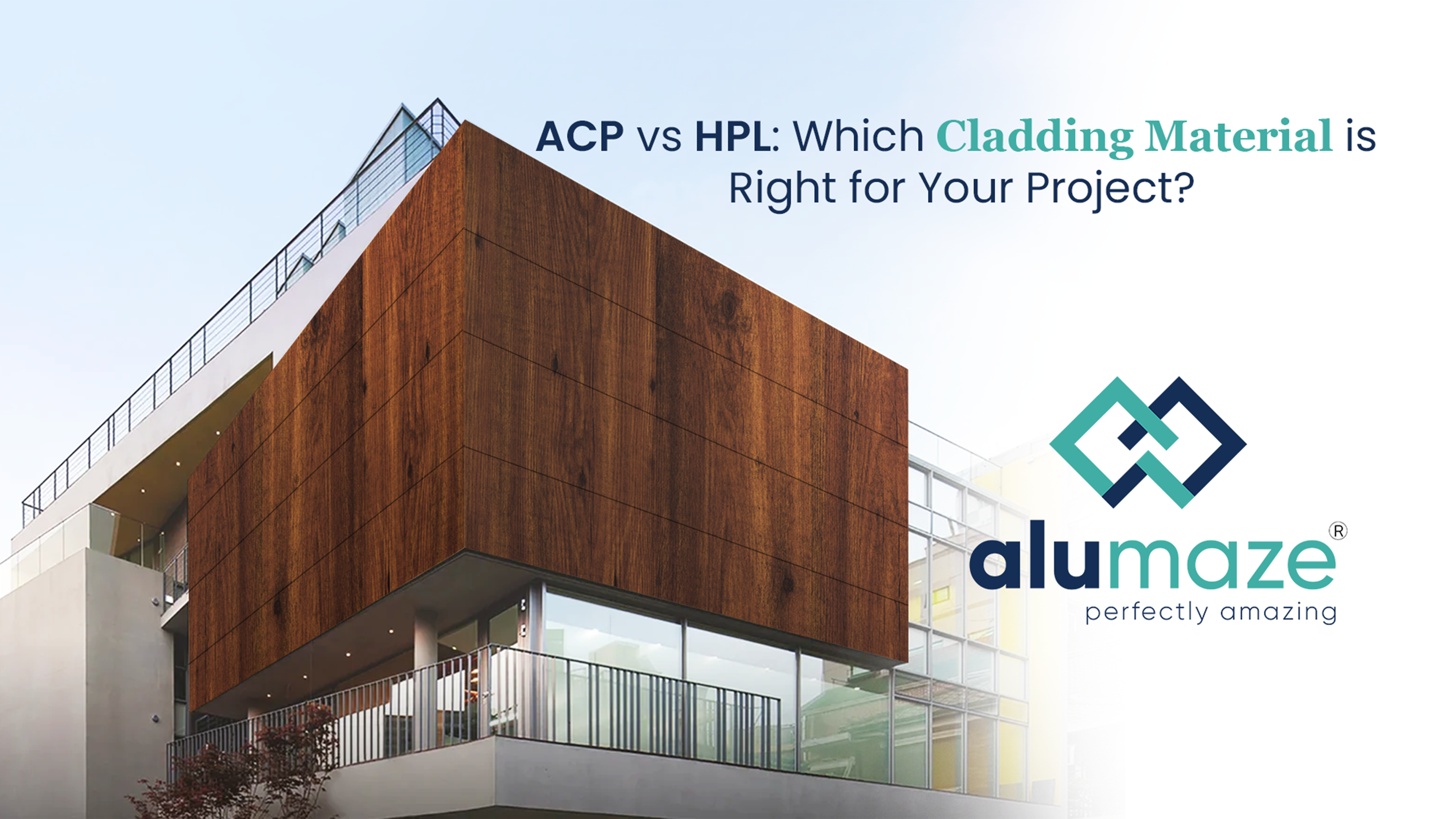Choosing the right cladding material for your building can significantly impact its appearance, performance, and durability. With numerous options available today, Aluminium Composite Panels (ACP) and High-Pressure Laminates (HPL) are two of the most popular choices for residential and commercial projects. Each material offers unique benefits and aesthetic appeal, but which is the best fit for your project?
In this blog, we’ll break down the key differences between ACP and HPL cladding, comparing their features, advantages, applications, and cost implications to help you make an informed decision.
What is ACP Cladding?
Aluminium Composite Panels (ACP) are flat panels consisting of two thin coil-coated aluminium sheets bonded to a non-aluminium core, usually made of polyethylene or a fire-retardant mineral-filled core. ACP sheets are widely used for both exterior and interior cladding due to their sleek finish and lightweight nature.
Key Features of ACP:
- Lightweight and easy to install
- Excellent durability and weather resistance
- Available in a wide variety of colours, textures, and finishes (e.g., metallic, mirror, stone, wood)
- Low maintenance
- Good insulation properties
What is HPL Cladding?
Aluminium HPL sheets refer to High-Pressure Laminate (HPL) sheets that are bonded with aluminium or supported by an aluminium base. These sheets are commonly used in exterior and interior cladding applications, combining the durability of aluminium with the decorative and functional benefits of HPL.
Key Features of HPL:
- Weather resistant – Ideal for exterior facades.
- UV resistant – Doesn’t fade easily under sunlight.
- Scratch & impact resistant.
- Fire-retardant properties.
- Low maintenance.
- Available in wood, stone, and custom finishes.
ACP vs HPL: A Detailed Comparison
Let’s compare the two materials based on several essential parameters:
1. Aesthetic Versatility
- ACP: Offers a sleek, modern appearance and is available in a wide range of colours, patterns, and surface finishes. Metallic and glossy finishes are a signature feature of ACP cladding.
- HPL: Provides a more natural and rustic look, especially suitable for wooden or stone-effect finishes. It offers a textured surface which adds depth to building facades.
2. Durability and Weather Resistance
- ACP: Highly resistant to weather changes, UV rays, and corrosion. It maintains its appearance for many years if properly maintained.
- HPL: Known for its toughness and ability to withstand harsh conditions including heavy rains, sunlight, and temperature fluctuations.
3. Fire Resistance
- ACP: Standard ACP panels with polyethylene cores are flammable, but fire-retardant ACPs are available with a mineral core to enhance fire safety.
- HPL: Often manufactured with fire-retardant properties as standard, especially in high-grade exterior variants.
4. Installation and Maintenance
- ACP: Easy and fast to install due to its lightweight properties. Requires minimal maintenance — just regular cleaning with a mild detergent.
- HPL: Heavier and requires more precision during installation. Maintenance is still easy, but installation can be more labor-intensive.
5. Cost Efficiency
- ACP: Generally more affordable than HPL, making it a popular choice for budget-conscious projects.
- HPL: Typically more expensive due to the manufacturing process and raw material cost, but the durability may offset long-term maintenance and replacement costs.
6. Environmental Impact
- ACP: Recyclable aluminium content, but polyethylene core can pose environmental concerns unless it’s the fire-retardant mineral version.
- HPL: Made using renewable kraft paper and resins, some variants are more eco-friendly and conform to green building standards.
Where Should You Use ACP or HPL?
Use ACP Cladding for:
- Commercial buildings
- Office interiors and partitions
- Shop facades and signage
- Budget-friendly exterior facades
- Modern and sleek architectural projects
Use HPL Cladding for:
- Residential buildings
- Villas or resort-style architecture
- Projects needing a natural wood or stone look
- High-traffic areas where scratch resistance is important
- Projects with strict fire and environmental regulations
Final Verdict: Which is Right for You?
There’s no one-size-fits-all answer when it comes to choosing between ACP and HPL.Your decision should be based on factors such as Aesthetic preferences
- Project location and environmental exposure
- Budget constraints
- Installation timeframes
- Safety and compliance requirements
If you’re aiming for a sleek, modern, and cost-effective solution — ACP is your go-to. However, if you prefer a more robust, premium, and natural finish with better fire and scratch resistance, HPL might be worth the investment.
At the end of the day, both materials have proven their worth in the cladding industry. It’s all about aligning your material choice with the vision and needs of your project.


